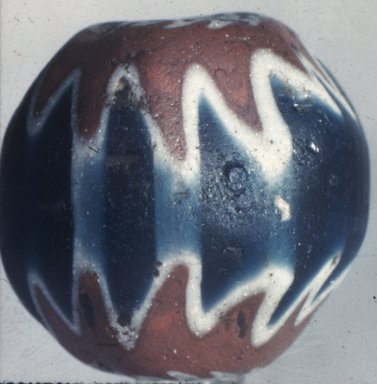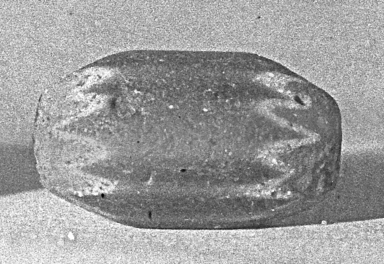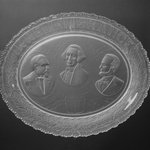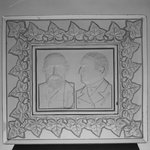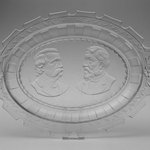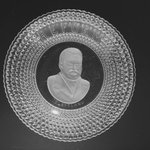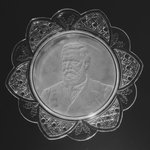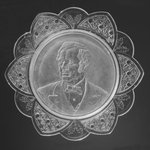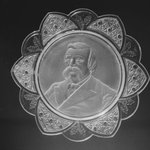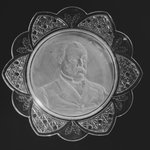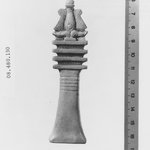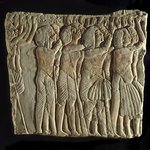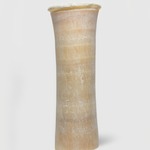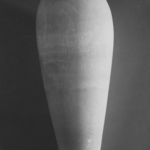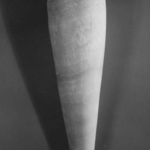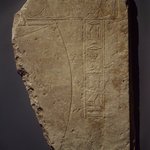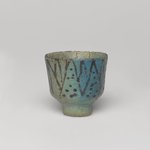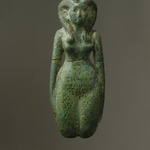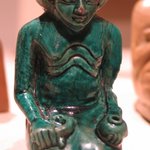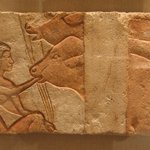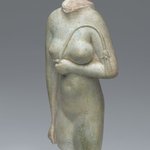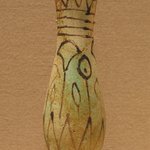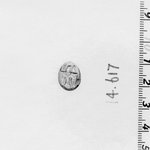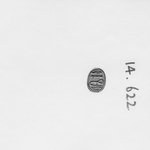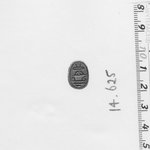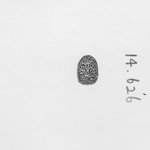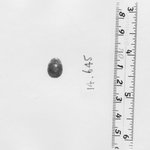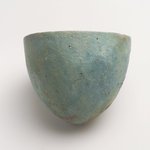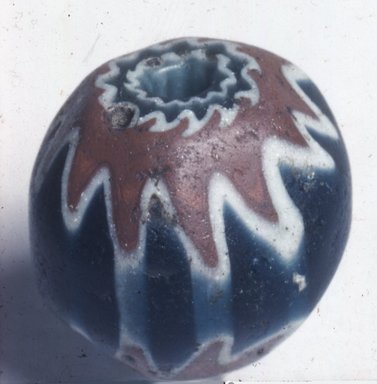

Chevron Bead, ca. 1500–1800 C.E. Glass, Diam. 1 × 15/16 in. (2.6 × 2.4 cm). Brooklyn Museum, Charles Edwin Wilbour Fund, 37.1437E. Creative Commons-BY (Photo: Brooklyn Museum, CUR.37.1437E_view2.jpg)
Chevron Bead
Egyptian, Classical, Ancient Near Eastern Art
MEDIUM
Glass
GEOGRAPHICAL LOCATIONS
- Reportedly from: Saqqara, Egypt
- Place made: Venice
DATES
ca. 1500–1800 C.E.
PERIOD
Venetian
DIMENSIONS
Diam. 1 × 15/16 in. (2.6 × 2.4 cm) (show scale)



COLLECTIONS
Egyptian, Classical, Ancient Near Eastern Art
ACCESSION NUMBER
37.1437E
CREDIT LINE
Charles Edwin Wilbour Fund
CATALOGUE DESCRIPTION
Short mosaic glass bead. The bead is cylindrical in shape, with tapering ends. It is made of several colors with the separate pieces of glass being laid lengthwise. The piece is pierced from end to end for suspension. The hole at each end is surrounded by a circular area of black glass. This black glass is framed by a band of white glass, which is in turn, surrounded by an area of glass delimited by a circular saw-shaped white band marks the outer limits of the flat surface (at each end). The tapering surfaces are of red glass terminated by a zigzag shaped band of white glass. The cylindrical portion of the bead is of translucent blue glass. Beneath the blue are visible strips of white glass which are those parts of the white glass which form the zigzag-shaped bands, and which are near the surface of the blue glass.
Condition: Incrustated scratches; hole running from one zigzag shaped white band to the other.
MUSEUM LOCATION
This item is not on view
CAPTION
Chevron Bead, ca. 1500–1800 C.E. Glass, Diam. 1 × 15/16 in. (2.6 × 2.4 cm). Brooklyn Museum, Charles Edwin Wilbour Fund, 37.1437E. Creative Commons-BY (Photo: Brooklyn Museum, CUR.37.1437E_view2.jpg)
IMAGE
overall, CUR.37.1437E_view2.jpg. Brooklyn Museum photograph
"CUR" at the beginning of an image file name means that the image was created by a curatorial staff member. These study images may be digital point-and-shoot photographs, when we don\'t yet have high-quality studio photography, or they may be scans of older negatives, slides, or photographic prints, providing historical documentation of the object.
RIGHTS STATEMENT
Creative Commons-BY
You may download and use Brooklyn Museum images of this three-dimensional work in accordance with a Creative Commons license. Fair use, as understood under the United States Copyright Act, may also apply.
Please include caption information from this page and credit the Brooklyn Museum. If you need a high resolution file, please fill out our online application form (charges apply).
For further information about copyright, we recommend resources at the United States Library of Congress, Cornell University, Copyright and Cultural Institutions: Guidelines for U.S. Libraries, Archives, and Museums, and Copyright Watch.
For more information about the Museum's rights project, including how rights types are assigned, please see our blog posts on copyright.
If you have any information regarding this work and rights to it, please contact copyright@brooklynmuseum.org.
RECORD COMPLETENESS
Not every record you will find here is complete. More information is available for some works than for others, and some entries have been updated more recently. Records are frequently reviewed and revised, and we welcome any additional information you might have.
